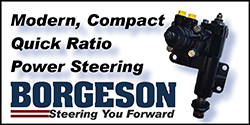so maybe the overly rough idle could be a pushrod issue, not opening long enough for its intended duration? Just a thought.
the rough idle
after the tune is right
>Is mostly due to the very late closing intake, that allows the piston, at idle, to push a portion of the just-inducted intake mixture, back up into the intake manifold. This messes up the plenum AFr, but also increases the pressure in there, decreasing the vacuum, and making it difficult for the carb to meter properly at low rpm.
>Pistons on the exhaust stroke can be connected to the intake plenum, during the overlap cycle,and the headers will pull mixture straight across the piston and out into the pipes.
> with a single plain intake, the pistons on the intake stroke can pull exhaust gasses from another cylinder that is on the overlap cycle, which reduces vacuum yet further.
But if the tune is bad;
a high required idle can be the consequence of a poor T-slot sync, usually because the blades are too-far closed. because the ignition timing is too far advanced.
In nearly all case the shake is from one of two things;
1) a poor AFR or
2) an excessively high pressure in the chambers, due to the high advance. At low rpm, those very strong pulses hammer the crank. The cure is as easy as retarding the timing. Back to something more normal. This will reduce the pressure, as it chases after the descending piston.
At idle, your engine will tolerate a lot of advance, maybe in the 40 degree range. With a low pressure engine lots of Idle-Timing works. But as the cranking cylinder pressure increases, you gotta cut it back, because of the very strong power pulses. This is especially important with a manual trans, as
the car tends to become undriveable at that low rpm. Again the cure is less Idle-Timing.
But as others have said; the metering-rod carbs are a little unhappy at those very low manifold vacuums.
So your first defense is retarded to normal timing, then a DUAL-Plain intake, and finally is a Holley-type PV carb.
Of course the valves actually do have to close,lol. and the rings have to be loose enough so the pistons can go up and down without too much dragging; because as the Idle-timing is reduced, the power will be reduced.
Just for comparison, my
11/1, 367/4-speed, idles at 500/550 in first gear, pulling itself around the parking lot,
with just 5 degrees of idle-timing. But it has a hard time with any grade at all or soft spots. But it takes all of the bucking away, until just before it stalls.This with a Hughes
276/286/110 cam/61* overlap.


















